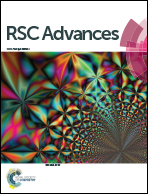Development of effective sequence multi-barrier reactive media for nitrate remediation in groundwater systems
Abstract
Early depletion of carbon-based electron donors and pollution swapping are among the recalcitrant challenges for in situ remediation technology. There is a pressing need to provide a slow but steady dose of materials for a prolonged period in order to sustain in situ treatments. In an effort to develop effective sequence multi-barrier reactive media that can address these challenges, the present study reports laboratory column experiments using organic (date seed, Moringa oleifera and wood chips) and inorganic (limestone; CaCO3) carbonaceous materials in varying proportions. The substances are supported by paleo sandy beach soil and are sequentially packed in line with the geometric pattern of a hypothetical funnel and gate for nitrate (NO3−) remediation. The optimized reactive media show remarkable efficiency, remediating 94.4% of NO3− as a target pollutant within the system. They also remediate 99.20% of the NO3− down the gradient and 96.4% of its lethal by-product – NO2−. However, with the generation of an 11-fold biomass build-up, the system is only able to eliminate 53% of the total organic carbon generated. Hence, the advective dispersive features of aquifers are required for the complete remediation of the generated secondary biomass. The results also reveal that the efficiency of the sequential media depends on the composition/ratio of the constituents, flow rate and the initial concentration of NO3− in the influent. Surface characterization studies (FESEM-EDX and FTIR) show that compared to wood chips, date seed is less prone to degradation, suggesting a longer life span. A degradation study affirms the findings of the surface studies as it reveals that the half-life of date seed is three times longer than that of wood chips. In addition, the study reveals that the double exponential model is more suitable than the single exponential model in determining the rate of decay of both wood chips and date seed.

- This article is part of the themed collection: Where will cleaner H2O spring from?


 Please wait while we load your content...
Please wait while we load your content...